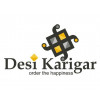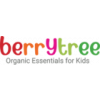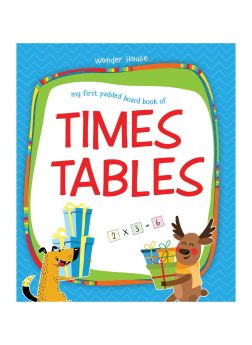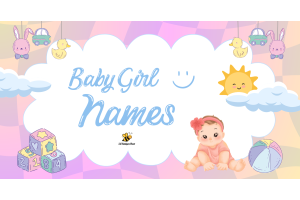1 to 20 Table for Kids
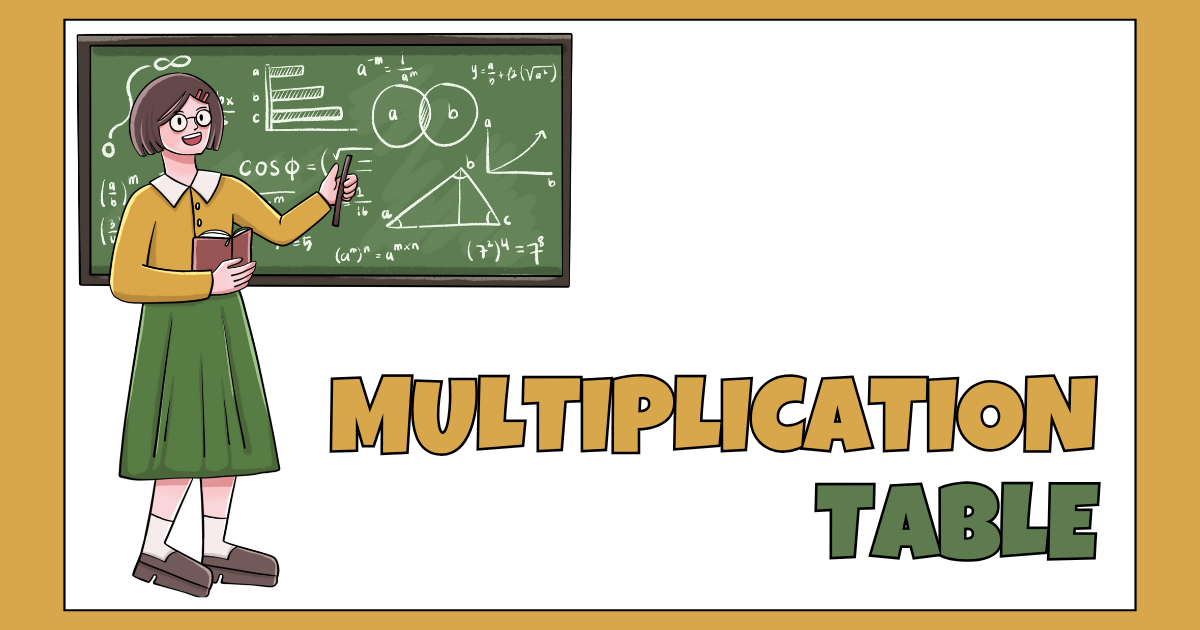
When it comes to kids learning, one of the most important foundations in mathematics is the multiplication table. Learning the 1 to 20 table helps children build a strong base in numbers, arithmetic, and problem-solving. Whether it is basic addition, subtraction, or moving towards division and fractions, understanding the multiplication table in English is a must. Parents and teachers often search for the complete table for kids 1 to 20 because it not only improves calculation speed but also gives children the confidence to handle math easily. The table of 1 to 20 is simple, clear, and designed to make learning fun and effective.
Introducing multiplication in early education makes math less scary and more enjoyable. The 1 to 20 table for kids acts as a guide that they can memorize and use throughout their schooling. Children who know the multiplication table in English can solve math questions quickly without depending too much on calculators or fingers. It also helps in real-life situations, like calculating money, counting objects, and understanding time.
Why Kids Should Learn the 1 to 20 Table
Multiplication is the base of advanced math. Without it, solving higher-level problems becomes tough. Kids learning the 1 to 20 table get several benefits. It sharpens their memory, boosts confidence, and enhances problem-solving skills. Once a child understands the table for kids 1 to 20, they find it easier to work on division, fractions, algebra, and even geometry later on. In short, multiplication becomes a tool for lifelong learning.
Another reason kids should learn the multiplication table in English is that it improves their speed. A student who knows the table of 1 to 20 can answer math questions instantly. This not only saves time during exams but also reduces mistakes. Teachers often recommend daily practice of multiplication tables to help children achieve fluency in math.
1 to 20 Multiplication Tables in English
Here are the multiplication tables from 1 to 20. These are written in simple English so that children can read and practice them easily.
Table of 1
1 × 1 = 1
1 × 2 = 2
1 × 3 = 3
1 × 4 = 4
1 × 5 = 5
1 × 6 = 6
1 × 7 = 7
1 × 8 = 8
1 × 9 = 9
1 × 10 = 10
Table of 2
2 × 1 = 2
2 × 2 = 4
2 × 3 = 6
2 × 4 = 8
2 × 5 = 10
2 × 6 = 12
2 × 7 = 14
2 × 8 = 16
2 × 9 = 18
2 × 10 = 20
Table of 3
3 × 1 = 3
3 × 2 = 6
3 × 3 = 9
3 × 4 = 12
3 × 5 = 15
3 × 6 = 18
3 × 7 = 21
3 × 8 = 24
3 × 9 = 27
3 × 10 = 30
Table of 4
4 × 1 = 4
4 × 2 = 8
4 × 3 = 12
4 × 4 = 16
4 × 5 = 20
4 × 6 = 24
4 × 7 = 28
4 × 8 = 32
4 × 9 = 36
4 × 10 = 40
Table of 5
5 × 1 = 5
5 × 2 = 10
5 × 3 = 15
5 × 4 = 20
5 × 5 = 25
5 × 6 = 30
5 × 7 = 35
5 × 8 = 40
5 × 9 = 45
5 × 10 = 50
Table of 6
6 × 1 = 6
6 × 2 = 12
6 × 3 = 18
6 × 4 = 24
6 × 5 = 30
6 × 6 = 36
6 × 7 = 42
6 × 8 = 48
6 × 9 = 54
6 × 10 = 60
Table of 7
7 × 1 = 7
7 × 2 = 14
7 × 3 = 21
7 × 4 = 28
7 × 5 = 35
7 × 6 = 42
7 × 7 = 49
7 × 8 = 56
7 × 9 = 63
7 × 10 = 70
Table of 8
8 × 1 = 8
8 × 2 = 16
8 × 3 = 24
8 × 4 = 32
8 × 5 = 40
8 × 6 = 48
8 × 7 = 56
8 × 8 = 64
8 × 9 = 72
8 × 10 = 80
Table of 9
9 × 1 = 9
9 × 2 = 18
9 × 3 = 27
9 × 4 = 36
9 × 5 = 45
9 × 6 = 54
9 × 7 = 63
9 × 8 = 72
9 × 9 = 81
9 × 10 = 90
Table of 10
10 × 1 = 10
10 × 2 = 20
10 × 3 = 30
10 × 4 = 40
10 × 5 = 50
10 × 6 = 60
10 × 7 = 70
10 × 8 = 80
10 × 9 = 90
10 × 10 = 100
Table of 11
11 × 1 = 11
11 × 2 = 22
11 × 3 = 33
11 × 4 = 44
11 × 5 = 55
11 × 6 = 66
11 × 7 = 77
11 × 8 = 88
11 × 9 = 99
11 × 10 = 110
Table of 12
12 × 1 = 12
12 × 2 = 24
12 × 3 = 36
12 × 4 = 48
12 × 5 = 60
12 × 6 = 72
12 × 7 = 84
12 × 8 = 96
12 × 9 = 108
12 × 10 = 120
Table of 13
13 × 1 = 13
13 × 2 = 26
13 × 3 = 39
13 × 4 = 52
13 × 5 = 65
13 × 6 = 78
13 × 7 = 91
13 × 8 = 104
13 × 9 = 117
13 × 10 = 130
Table of 14
14 × 1 = 14
14 × 2 = 28
14 × 3 = 42
14 × 4 = 56
14 × 5 = 70
14 × 6 = 84
14 × 7 = 98
14 × 8 = 112
14 × 9 = 126
14 × 10 = 140
Table of 15
15 × 1 = 15
15 × 2 = 30
15 × 3 = 45
15 × 4 = 60
15 × 5 = 75
15 × 6 = 90
15 × 7 = 105
15 × 8 = 120
15 × 9 = 135
15 × 10 = 150
Table of 16
16 × 1 = 16
16 × 2 = 32
16 × 3 = 48
16 × 4 = 64
16 × 5 = 80
16 × 6 = 96
16 × 7 = 112
16 × 8 = 128
16 × 9 = 144
16 × 10 = 160
Table of 17
17 × 1 = 17
17 × 2 = 34
17 × 3 = 51
17 × 4 = 68
17 × 5 = 85
17 × 6 = 102
17 × 7 = 119
17 × 8 = 136
17 × 9 = 153
17 × 10 = 170
Table of 18
18 × 1 = 18
18 × 2 = 36
18 × 3 = 54
18 × 4 = 72
18 × 5 = 90
18 × 6 = 108
18 × 7 = 126
18 × 8 = 144
18 × 9 = 162
18 × 10 = 180
Table of 19
19 × 1 = 19
19 × 2 = 38
19 × 3 = 57
19 × 4 = 76
19 × 5 = 95
19 × 6 = 114
19 × 7 = 133
19 × 8 = 152
19 × 9 = 171
19 × 10 = 190
Table of 20
20 × 1 = 20
20 × 2 = 40
20 × 3 = 60
20 × 4 = 80
20 × 5 = 100
20 × 6 = 120
20 × 7 = 140
20 × 8 = 160
20 × 9 = 180
20 × 10 = 200
How to Memorize the Table of 1 to 20
Children often find it difficult to remember all multiplication tables, especially from 12 onwards. Here are some simple tips to make learning easier:
-
Start with smaller numbers. Learn the tables of 1 to 5 first.
-
Practice regularly. Daily repetition helps in memory retention.
-
Use patterns. For example, the table of 5 always ends with 0 or 5.
-
Write and recite. Writing the tables down helps children memorize faster.
-
Use games and quizzes to make learning interactive.
Fun Ways to Teach Multiplication Table in English
Learning does not always have to be serious. Kids enjoy learning when it is fun. Parents and teachers can use rhymes, flashcards, charts, and interactive apps to teach the 1 to 20 table. Songs or rhythmic patterns also help children memorize better. Group activities in the classroom make multiplication practice enjoyable and engaging.
Why Multiplication Tables Matter Beyond School
The table of 1 to 20 is not just about passing exams. It plays a big role in everyday life. From calculating shopping bills, dividing chocolates among friends, or figuring out time and distance, multiplication is everywhere. Children who know multiplication tables in English can handle daily math problems without stress. It builds a strong base for subjects like physics, chemistry, and even economics later in life.
The 1 to 20 table for kids is one of the most important learning steps in math. With simple practice, repetition, and creative teaching methods, children can master multiplication easily. The table for kids 1 to 20 gives them confidence, sharpens their memory, and improves their overall learning skills. Multiplication tables are not just numbers on a chart, they are tools for lifelong problem-solving. Encourage kids to practice daily and make learning fun so that math becomes their favorite subject.

